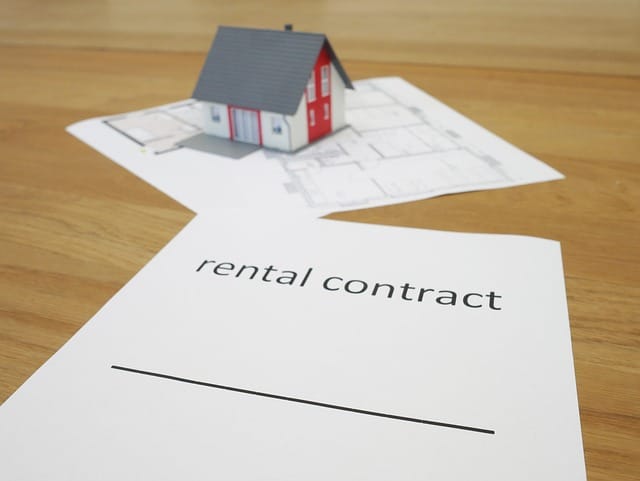The demand for rental properties has soared in the last 15 years. Census data shows an increase of over 5 million rental units in the US between 2010 and 2023. Trends suggest people are renting until later in life. Younger generations are more likely to sign a rental contract than to buy a property during their 20s and 30s. There are many reasons for this, including higher house prices, a spike in the cost of living, and difficulties saving enough to get onto the property ladder. Buy-to-let investing can be lucrative, but it’s not always an easy way to make money. If you’re thinking about purchasing real estate with a view to renting, this guide highlights the pros and cons.
The pros
There are several advantages to buying a property to let if you’re an investor looking to make money.
Making money
The main reason why people invest in rental properties is to make money. The demand for units is increasing year on year at the moment, with many people struggling to afford to buy. Renting also offers flexibility, which is attractive for potential buyers who don’t want to put down roots and those who move around a lot for work.
Rental yields vary hugely, depending on where you are in the world, the type of property you buy, and the market conditions. In sought-after areas where the demand is higher than the supply, you may find buying-to-let very profitable. In locations where the supply outweighs the demand, competition among owners is fierce, and the market moves slowly, it’s much more challenging to generate a stable income and maximize profits.
The key to increasing your chances of success as an aspiring investor lies in choosing the right property. This covers the location, the purchase price, your expected rental income, and the local market. Research is crucial. Before you make any offers or shortlist properties, analyze data, calculate potential yields and incomes, make sure you understand expenses and taxes, and keep an eye on other properties in the area. Think carefully about who you want to attract. Buying with a target audience in mind can help you fill homes quickly and achieve the yield you want.
Long-term opportunities
Some investors snap up real estate to flip and sell with the goal of making profits rapidly. Buying-to-let offers great long-term investment opportunities for those who want to put money into an asset that will grow. When you buy real estate, you pay into an asset that you own. If you have long-term ambitions and objectives, there’s less pressure to make money quickly, and you can often ride out any fluctuations or situations that affect the market value of your property. Unless you’re in a hurry to sell due to unexpected circumstances, you can wait until the timing is right. This means selling when prices peak and the demand is high.
Simpler management processes
Managing a property is a potential downside for many investors. It takes time and effort to be a rental property owner. The good news is that times have changed. Now, if you’re a landlord or landlady, you don’t have to be at the beck and call of your tenants and worry about tasks like finding the right people, overseeing negotiations and contracts, inspecting units, or taking care of maintenance. There are professional services you can utilize to take the stress out of owning rental homes.
You can take advantage of innovative, time-saving solutions like online rental application services that help you find tenants, carry out background checks on individuals, and customize application forms for your property. You can also hire agencies to manage your unit, liaise with your tenants, respond to queries, and address issues on your behalf. The entire process can be streamlined and simplified, enabling you to generate money with less hassle.

The cons
Buying a property to let can be lucrative, especially if you buy and sell at the right time and the rental market is strong. There are several advantages, but there are also downsides. These include:
Costs
Investing in a buy-to-let property is not as simple as purchasing a property, finding a tenant, and taking payments from them each month. There are multiple costs and expenses involved, which eat into your profits. Costs vary according to where the property is located, your income, and your tax status, but may include taxes, management fees, insurance, and legal expenses. In many cases, you’ll also be responsible for upkeep, maintenance, and repair costs. Sometimes, these can be very high and they may come out of the blue. Repairs like replacing the roof, updating the heating system, and major plumbing work, for example, can cost thousands.
If you buy a rental property, it’s always beneficial to have funds available to upgrade, update, and repair it. Setting up an emergency fund or separate savings account is a good idea. It’s also critical to make sure you have a robust insurance policy. It’s worth researching and comparing products and seeking expert advice to find the best plans for your rental unit.
Time
It is possible to pass the burden of managing a property and finding tenants to professional service providers and agencies, but this comes at a price. If you want to keep more of your money and take care of property management and other processes yourself, it’s important to be aware of the time commitment. If you are the main point of contact and you have an agreement with your tenants, they will expect you to be available to take calls and arrange repairs at any time. It can be challenging to juggle managing a rental property and other commitments, such as your job, raising kids, and taking care of your own home.
Buying-to-let can be a very profitable investment venture, but it carries risks and there are downsides. While the rental market is growing and demand is rising, which offers golden opportunities to make money, there are significant costs and expenses involved, and managing a property can be time-consuming and stressful. It’s wise to weigh up the pros and cons, research local markets, and find out more about what life is like as a rental property owner before you take the plunge.
